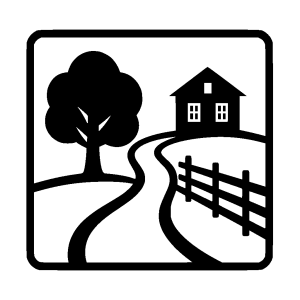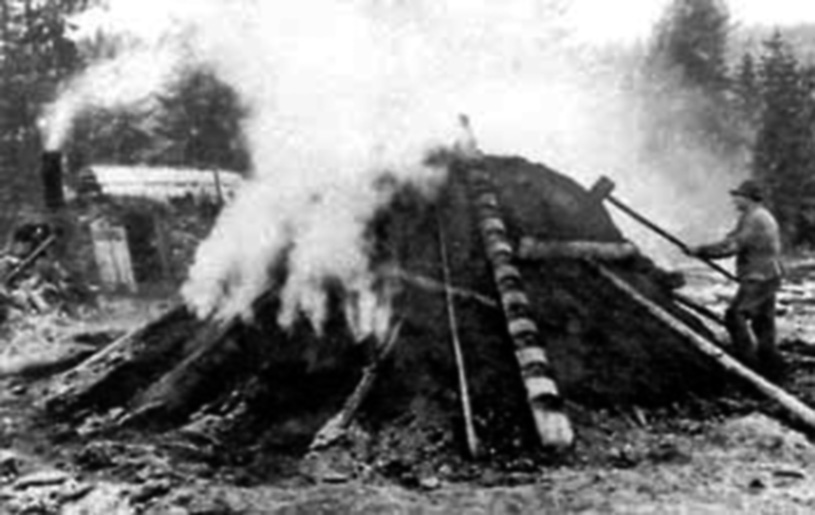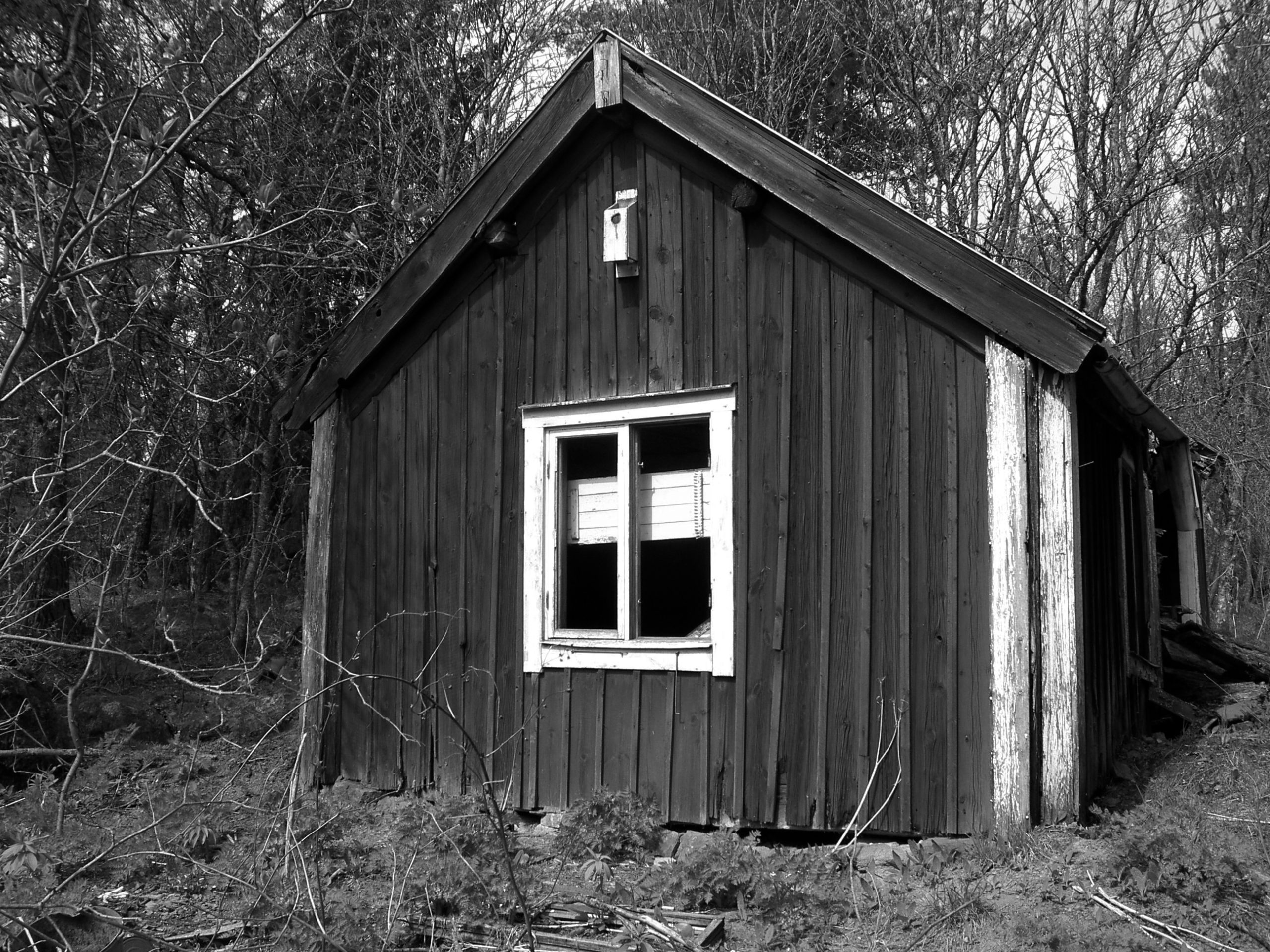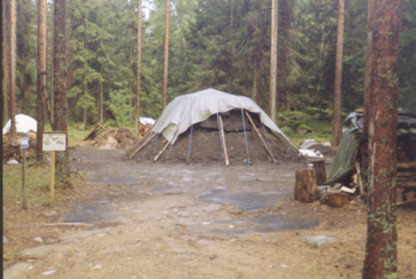
27. Kolbottnen & the Viktoria cottage
This place is called Kolbottnen and layers of black soil can be seen on the edge of the ditch. These are the remains of old charcoal making. Charcoal production is an ancient activity. When our ancestors used lake and bog ore, charcoal was used to smelt the ore. Later, when ironworks carried out iron production on a more industrial scale, enormous amounts of charcoal were used. Coal mines smolder almost all over the country. The charcoal from the mines in this area is used in smelters (blast furnaces) for example in Herräng, Ortala and Edsbro.
A charcoal kiln is a controlled heating of wood with limited oxygen supply. By covering a pile of wood with soil and peat and then lighting it, the charring process is initiated. The pit is monitored day and night by charcoal makers who live in ’kolarkojor’ (charcoal-burner huts) in the forest. The site of an old pit is often visible as a charcoal bed, covered in black lumps of charcoal. Charcoal beds often deviate from the surrounding vegetation and appear as large, shallow, and flat pits.
Viktoriastugan. Here at the coal bottom, a single woman, Viktoria Fredriksson, lived until her death in 1951 in a simple hillside cottage on unclaimed land. The cottage was probably originally intended as a coal keeper’s residence. The cottage is very old, from the late 18th century. It has a rammed earth floor and in the hallway part of the rock protrudes. It is said that she is knowledgeable in the art of healing, a so-called wise woman.
Today, there are some ruins left of what is known as Viktoriastugan. Charcoal beds can be seen in several places in the forest near the cottage. Follow the signs to Viktoriastugan.


Extra material

